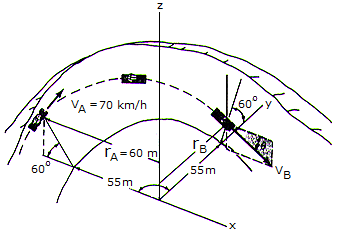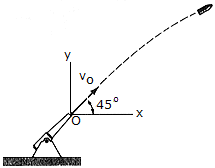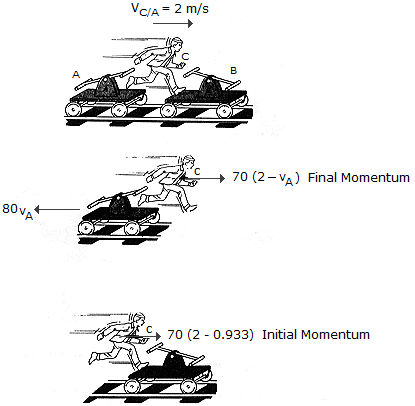Engineering Mechanics - KOP: Impulse and Momentum
- KOP: Impulse and Momentum - General Questions

The motor M pulls on the cables with a force F that has a magnitude which varies as shown on the graph. If the 15-kg crate is originally resting on the floor such that the cable tension is zero when the motor is turned on, determine the speed of the crate when t = 6s.

A stunt driver in car A travels in free flight off the edge of a ramp at C. At the point of maximum height he strikes car B. If the direct collision is perfectly plastic (e = 0), determine the required ramp speed vC at the end of the ramp C, and the approximate distance s where both cars strike the ground. Each car has a mass of 3.5 Mg. Neglect the size of the cars in the calculation.

A toboggan and rider, having a total mass of 150 kg, enter horizontally tangent to a 90° circular curve with a velocity VA and the angle  of "descent," measured from the horizontal in a vertical x — z plane, at which the toboggan exits at B. Neglect friction in the calculation. The radius rB equals 57 m.
of "descent," measured from the horizontal in a vertical x — z plane, at which the toboggan exits at B. Neglect friction in the calculation. The radius rB equals 57 m.

The projectile having a mass of m = 3 kg is fired from a cannon with a muzzle velocity of vO = 500 m/s. Determine the projectile's angular momentum about point O at the instant it is at the maximum height of its trajectory.

The two handcars A and B each have a mass of 80 kg. Both cars are initially at rest. Both cars start from rest before the man jumps. If the man C has a mass of 70 kg and jumps from A with a horizontal relative velocity of vC/A = 2 m/s and lands on B, determine the velocity of each car after the jump. Neglect the effects of rolling resistance.